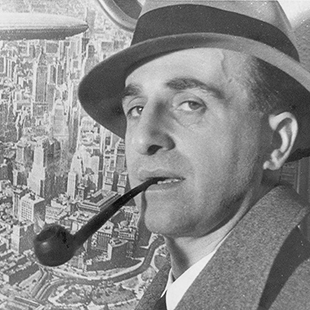Gino Levi-Montalcini

Gino Levi-Montalcini (1902-1974) was an important Italian architect. He was a member of an important Turin family of Jewish origins, whose members were able to achieve excellence in various fields: his younger sister Rita-Levi Montalcini was in fact an important scientist, also awarded the Nobel Prize, while her twin Paola was a celebrated painter. Gino's name is instead mainly linked to the architectural movement of Rationalism, a movement he joined by frequenting the avant-garde intellectual circles during his years of study at the Polytechnic of Turin. His first years of activity saw him alongside Giuseppe Pagano, his former classmate: the two co-signed together one of the main rationalist architectures of the period, the Palazzo Gualino in Turin (1928), built to house the offices of the companies of the important Piedmontese industrialist Riccardo Gualino. During the 1930s he continued his activity independently in Turin with numerous projects including Villa Caudano (1935-36). At the end of the decade he was forced to stop working due to the racial laws promulgated by the fascist regime, but managed to escape harsher persecution during the war years. In the post-war period he was the protagonist of an intense university teaching activity in Turin (1948-56), Palermo (1956-64) and Padua (1964-71), accompanied by important projects such as the planning of the new Vallette district in Turin (1957-58) and the Palazzo Nuovo of the University of Turin (1961-66). Some of the furnishings created for his projects were re-edited starting in the 1980s by the Zanotta brand.